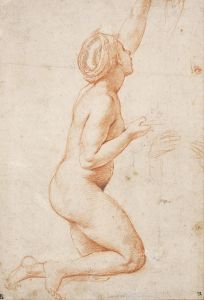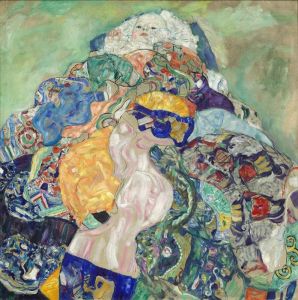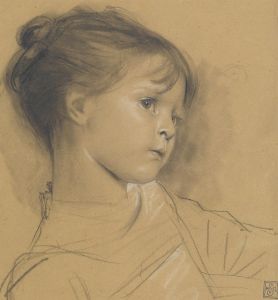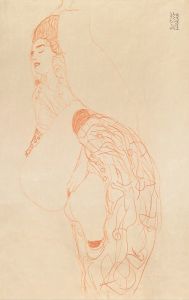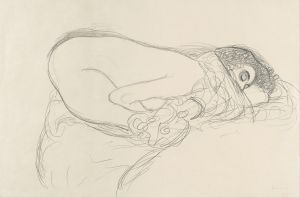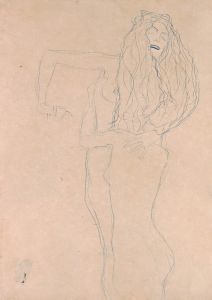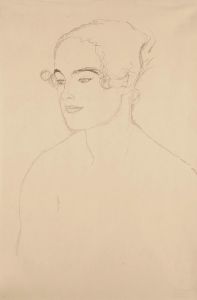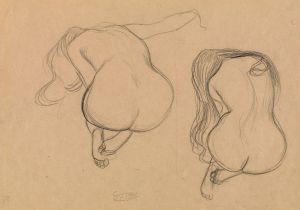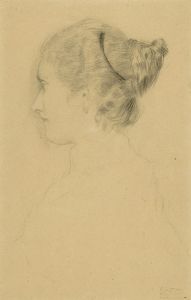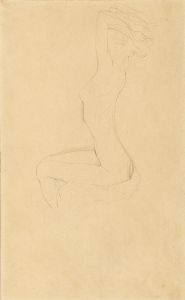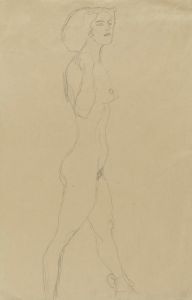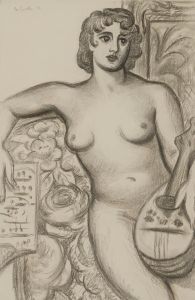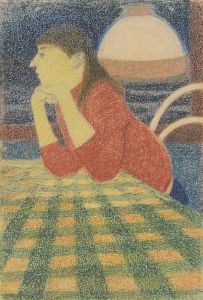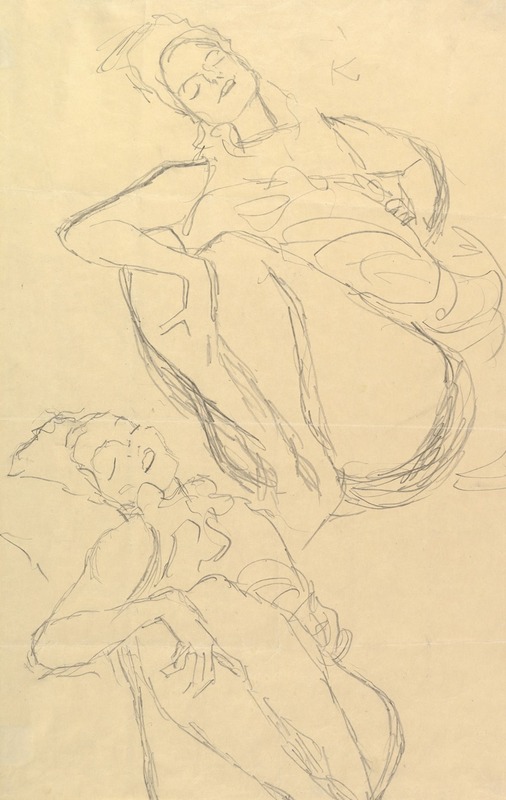
Two Studies for a Crouching Woman
A hand-painted replica of Gustav Klimt’s masterpiece Two Studies for a Crouching Woman, meticulously crafted by professional artists to capture the true essence of the original. Each piece is created with museum-quality canvas and rare mineral pigments, carefully painted by experienced artists with delicate brushstrokes and rich, layered colors to perfectly recreate the texture of the original artwork. Unlike machine-printed reproductions, this hand-painted version brings the painting to life, infused with the artist’s emotions and skill in every stroke. Whether for personal collection or home decoration, it instantly elevates the artistic atmosphere of any space.
Gustav Klimt, an Austrian symbolist painter, is renowned for his distinctive style and significant contributions to the Vienna Secession movement. Among his extensive body of work, "Two Studies for a Crouching Woman" is a notable piece that reflects his fascination with the human form and his exceptional draftsmanship skills. This work is a study drawing, which means it was likely created as a preparatory work for a larger composition or as an exploration of form and posture.
Klimt's drawings often served as a foundation for his paintings, allowing him to experiment with poses, expressions, and the intricate details of the human body. "Two Studies for a Crouching Woman" exemplifies this process, showcasing Klimt's ability to capture the subtleties of the human figure with precision and sensitivity. The drawing features two separate studies of a woman in a crouching position, each rendered with delicate lines and a keen attention to anatomical detail.
The crouching pose is a recurring theme in Klimt's work, reflecting his interest in natural, unguarded positions that convey a sense of intimacy and vulnerability. This particular study highlights Klimt's skill in depicting the female form, a central subject in his oeuvre. His approach to the human body is both sensual and respectful, emphasizing the beauty and complexity of his subjects.
Klimt's drawings are characterized by their fluid lines and the use of shading to create depth and dimension. In "Two Studies for a Crouching Woman," he employs these techniques to great effect, capturing the tension and relaxation in the woman's muscles and the graceful curves of her body. The drawing is executed with a light touch, suggesting movement and life within the static medium of pencil on paper.
The significance of Klimt's studies lies not only in their artistic merit but also in their role in the development of his larger works. These drawings provide insight into his creative process and the meticulous planning that underpinned his more elaborate paintings. They reveal Klimt's dedication to exploring the human form and his commitment to achieving a harmonious balance between realism and abstraction.
Klimt's work, including his studies, has had a lasting impact on the art world, influencing generations of artists and continuing to captivate audiences with its beauty and complexity. "Two Studies for a Crouching Woman" is a testament to his mastery of line and form, as well as his enduring fascination with the human figure. Through this drawing, viewers can appreciate Klimt's unique vision and his contribution to the evolution of modern art.
While specific details about the creation and history of "Two Studies for a Crouching Woman" may be limited, the drawing remains an important part of Klimt's legacy, offering a glimpse into the mind of one of the most influential artists of the late 19th and early 20th centuries.





